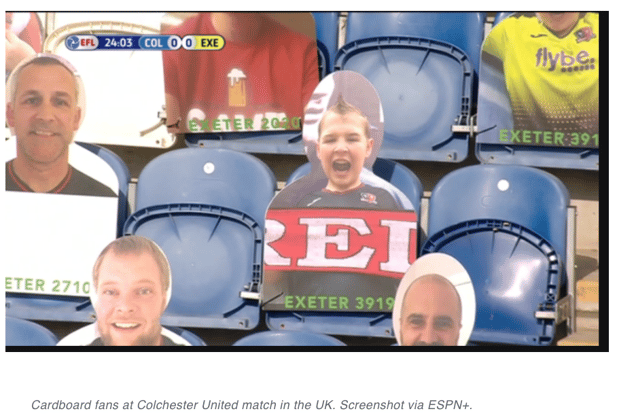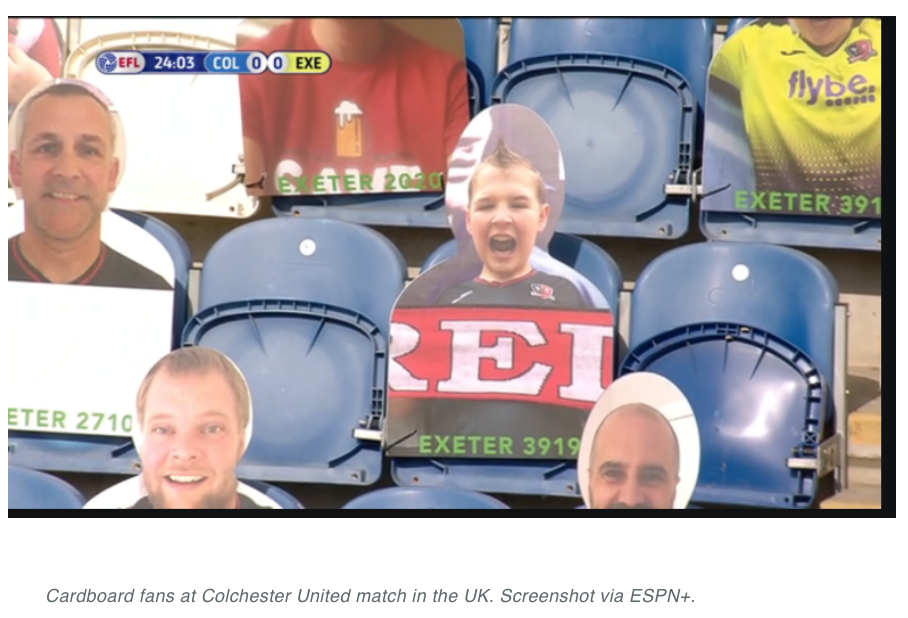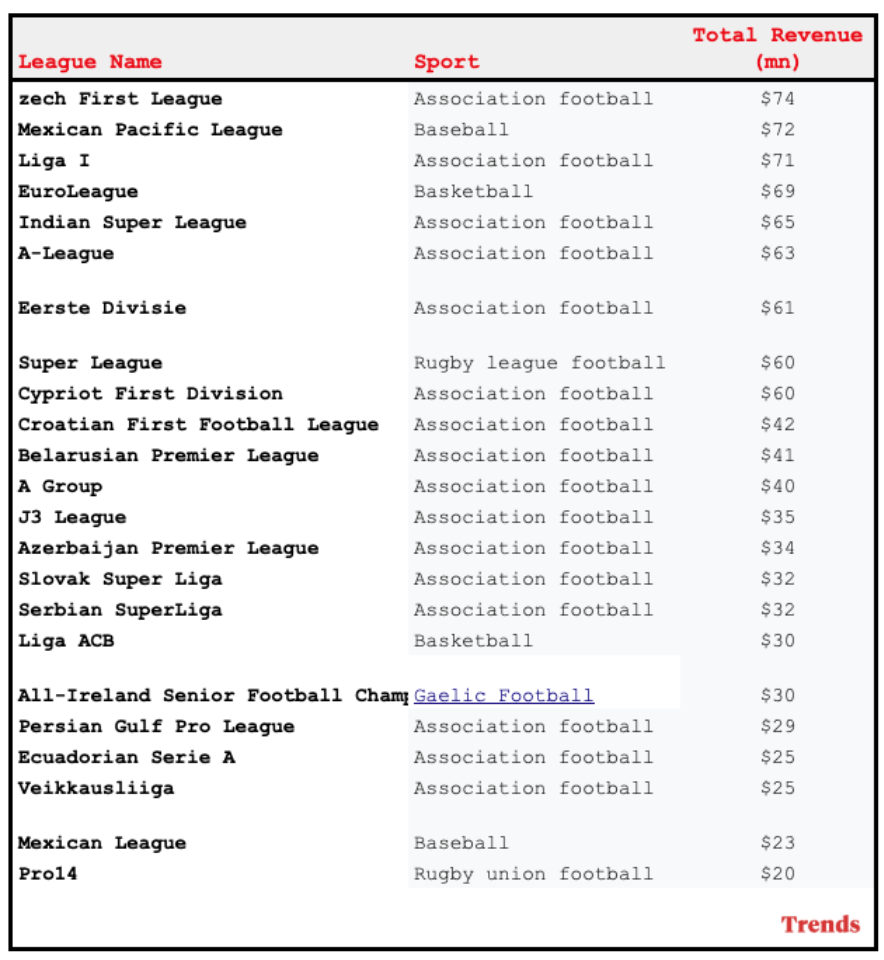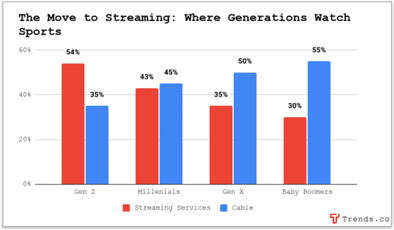nlopchantamang.com
Cardboard Sports Fans Might Be Here to Stay
Michael Waters

The Signal: Professional sports leagues are planning to start back up in the coming months — but unless you’re living in New Zealand, don’t expect any fans in the audience.
In 2018, ticket sales made up $19.6B, or ~27%, of overall sports revenue. Sports teams have a problem: 27% is a massive proportion to handwave away. They’re eager for ways to fill some of that gap.
One solution is slowly winning out: cardboard cutouts. Fans submit photos of themselves from the torso up, then a company prints them on cardboard and installs them in a TV-viewable seat. The pitch: You get to see yourself at the game while supporting your team.

Cardboard cutouts are popping up in South Korea, Taiwan, Australia, the UK, and Sweden. Some are seeing a deluge of customers: In Germany, the soccer club Borussia Mönchengladbach has sold over 21k+ cardboard cutouts since April, according to the fan club FMPG that is organizing the initiative.
Cardboard fans have even gone stateside. The first team in the US to test out cardboard fans — the Oakland Roots — is an independent soccer club launched in 2018.
The Opportunity:
In the major sports leagues, cardboard cutouts probably won’t stick around once the pandemic ends. When your average seat price costs in the hundreds of dollars, selling a cardboard cutout for $20 to $45 will hardly make a dent in profits.
But there’s a real opportunity with smaller teams — teams that don’t sell out their tickets even in normal times. Lara Smedley, a veteran sports event organizer who recently launched My Fan Seats, told Trends that some small-time college teams she’s reached out to are talking about keeping cardboard fans around for the long haul.
Their idea: What if friends or family members of players who live far away could buy cardboard versions of themselves and place them in the stands? For players, “maybe their families are there in cardboard form, and they’re surprised by seeing their mom or dad’s face,” Smedley says. For small teams, it’s a quirky way to earn extra money and fill their excess seats.
As an industry, cardboard fans barely existed pre-pandemic — but here is a snapshot of the current players:
- Face Fan, the spinoff of a license plate and traffic signs maker called Tennants UK.
- Fans at The Game, an outgrowth of the sports advertising firm The Football Company.
- Be At The Game, a startup co-founded by Tom Hickson, president of the World Dodgeball Association.
- My Fan Seats, a US-based company spun out of the sports-focused Smedley Events.
The list prices of cardboard cutouts vary wildly, but all are in the range of $20 to $45 (e.g., Beşiktaş: ~$19; Brighton: ~$25; and Oakland Roots: $35-$45). For reference: In Germany, production cost is 10 euro ($11.24).
According to Hickson of Be At The Game, the real opportunity is with smaller independent and college teams. Groups like the American Basketball Association, the American Association of Independent Professional Baseball, and the National Independent Soccer Association are most likely to go all in on cardboard cutouts. Sports leagues with total revenues of less than $75m could be good places to target:

A related opportunity:
- Crowd noise. Web apps like HearMeCheer have landed partnerships with networks like ESPN for inventing a way to bring at-home audience reactions onto TV. HearMeCheer, for instance, asks people to record their reactions live while they watch the TV — then relays their cheers or their boos back to the broadcast in real-time.


Leave a Comment